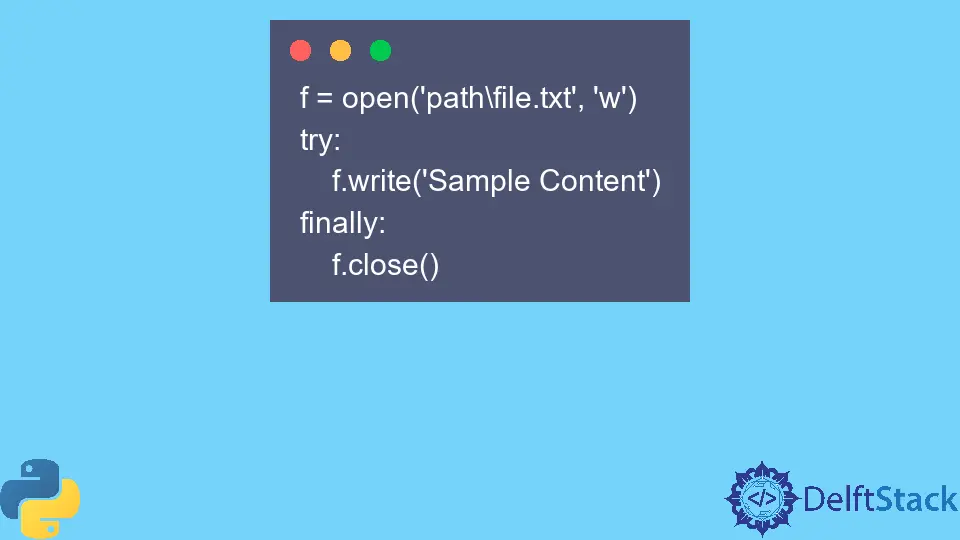The with Statement in Python

Python provides a variety of features and options to improve our existing code. One such feature is the with keyword.
This tutorial will demonstrate the function of the with statement and its applications in Python.
Use the with Statement in Python
This statement is essentially used to help handle exceptions and clear up resources as they are used. It ensures that the code is executed properly and the resources are cleaned up afterward.
Mostly, you will find the use of the with statement in file handling. Let us discuss an example.
f = open("path\file.txt", "w")
f.write("Sample Content")
f.close()
In the above example, we have opened a file using the open() function and wrote some content using the write() method. Then, the close() function closed the file object and cleared up the resources.
Let’s see how the above code looks with the with keyword.
with open("path\file.txt") as f:
f.write("Sample Content")
In the code, we can see that, using the with statement, we were able to eliminate the use of the close() function.
Another instance where the with statement can be helpful is in encapsulating the try and finally blocks.
For example,
f = open("path\file.txt", "w")
try:
f.write("Sample Content")
finally:
f.close()
The try block takes a code like opening a file, and the code in the finally block is executed regardless if the code in the try block raises an exception. In the above example, the code in the finally block will execute and run the close() function, even if the write() function raises an exception.
We have seen how we can achieve this using the with statement in the earlier example.
We can also use the with statement with user-defined objects, and such objects are known as context managers. They have an __enter__ and __exit__ method defined.
The __enter__ method executes while creating an object of this class using the with statement. The __exit__ method executes when the code in the with block finishes.
class writer_class(object):
def __init__(self, filename):
self.filename = filename
def __enter__(self):
self.f = open(self.filename, "w")
return self.f
def __exit__(self, exception, value):
self.f.close()
with writer_class("file.txt") as f:
f.write("DelftStack")
The objects of the above class in Python execute the __enter__ method when created, which is used to open the file. The close() function is put inside the __exit__ method to close the file object when the code has been executed.
Like classes, we can use the contextlib library to create context manager methods. These methods can be made using the @contextmanager decorator, which is put before the defined function.
For example,
from contextlib import contextmanager
@contextmanager
def new_open(file):
try:
f = open(file, "w")
yield f
finally:
f.close()
with new_open("sample.txt") as f:
f.write("DelftStack")
In the example code, we can see the use of the @contextmanager decorator that allows us to create such methods. In the defined function, we put the complete code for creating the file object and closing the created object using the try and finally blocks.
Conclusion
To conclude, we discussed the with statement in Python and its uses. We first discussed the basics of this statement and how it improves code readability and efficiency by cleaning up the resources.
We focused on its most common application with file handling to demonstrate its use. We also discussed context manager and its methods and how we can use the with statement with them.
Manav is a IT Professional who has a lot of experience as a core developer in many live projects. He is an avid learner who enjoys learning new things and sharing his findings whenever possible.
LinkedIn